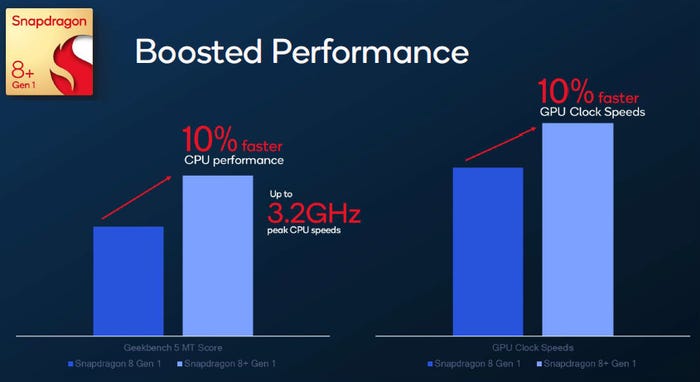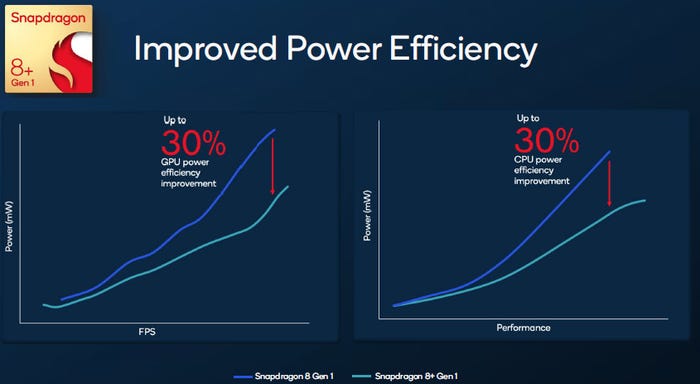Qualcomm makes flagship Snapdragon chip a bit better
US mobile chip giant Qualcomm has further complicated its new Snapdragon naming scheme by throwing a ‘plus’ into the equation.
May 23, 2022

US mobile chip giant Qualcomm has further complicated its new Snapdragon naming scheme by throwing a ‘plus’ into the equation.
It has only been six months since Qualcomm unveiled the fruit of its product marketing department’s labours. The new cunning plan involved ditching the old three-number Snapdragon naming scheme in favour of a single number – 8 – followed by ‘Gen 1’. We inferred the next one would be ‘Gen 2’ and so on, in reference to successive generations of the Snapdragon 8 platform, but how naïve we were.
Instead, Qualcomm’s latest flagship mobile chip is called the ‘Snapdragon 8+ Gen 1’. Presumably the improvements offered are considered insufficient to justify a whole new generation, which is fair enough, but it does feel like the clever new naming scheme has faltered at its first test. You can see those claimed improvements below.


According to chip specialist site AnandTech the substantial change is a foundry shift from Samsung to market leader TSMC. This seems to have offered such a significant set of improvements that you have to wonder why it hadn’t happened sooner but there are presumably good reasons. Maybe TSMC has only recently established such an advantage over Samsung.
Qualcomm’s other major announcement is the application of the new naming scheme to the next tier of chips down the price/performance stack. Here the naming scheme is nice and coherent, with the introduction of the Snapdragon 7 Gen 1 family. These descending numbers will presumably continue as you go further down the stack.
“In the mobile segment, our primary focus is to deliver new, groundbreaking features and technologies to the industry, and for our customers’ flagship devices,” said Christopher Patrick, GM of mobile handsets at Qualcomm. We implement these features first in our Snapdragon 8-series and then waterfall them down our mobile roadmap. The new Snapdragon 8+ and 7 Gen 1 both deliver breakthrough user experiences in their respective tiers.”
Arguably the most intense competition in the mobile chip space tales place in the lower smartphone tiers, with the likes of MediaTek competing more evenly with Qualcomm there. You can buy a perfectly decent smartphone for £200-300 these days and most people don’t need super-high performance from their digital Swiss Army knives. Having said that, the reflected glory of having the performance leader (among third party chips) has always served it well, which explains why it’s bothering us with all this ‘plus’ business.
About the Author
You May Also Like


.png?width=300&auto=webp&quality=80&disable=upscale)







.png?width=300&auto=webp&quality=80&disable=upscale)


_1.jpg?width=300&auto=webp&quality=80&disable=upscale)